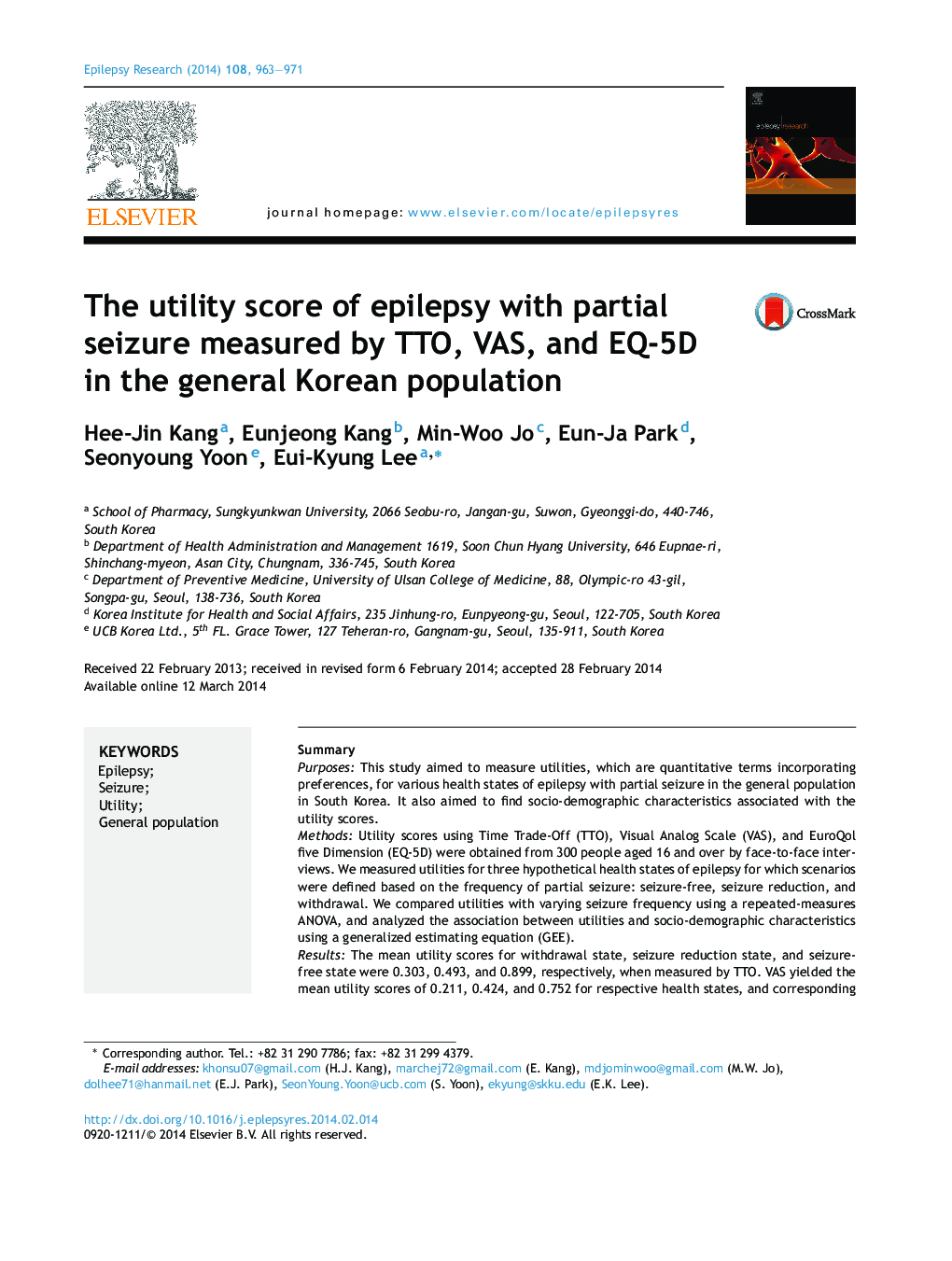| کد مقاله | کد نشریه | سال انتشار | مقاله انگلیسی | نسخه تمام متن |
|---|---|---|---|---|
| 6015694 | 1186075 | 2014 | 9 صفحه PDF | دانلود رایگان |

- Utility of epilepsy with partial seizure was measured by TTO, VAS and EQ-5D in general population.
- Seizure-free (0.899, 0.959 measured by TTO, EQ-5D respectively) had higher utility scores than seizure reduction (0.493, 0.645) and withdrawal (0.303, 0.261).
- Mean utilities from EQ-5D were greater than those from TTO for the seizure reduction and the seizure-free state.
SummaryPurposesThis study aimed to measure utilities, which are quantitative terms incorporating preferences, for various health states of epilepsy with partial seizure in the general population in South Korea. It also aimed to find socio-demographic characteristics associated with the utility scores.MethodsUtility scores using Time Trade-Off (TTO), Visual Analog Scale (VAS), and EuroQol five Dimension (EQ-5D) were obtained from 300 people aged 16 and over by face-to-face interviews. We measured utilities for three hypothetical health states of epilepsy for which scenarios were defined based on the frequency of partial seizure: seizure-free, seizure reduction, and withdrawal. We compared utilities with varying seizure frequency using a repeated-measures ANOVA, and analyzed the association between utilities and socio-demographic characteristics using a generalized estimating equation (GEE).ResultsThe mean utility scores for withdrawal state, seizure reduction state, and seizure-free state were 0.303, 0.493, and 0.899, respectively, when measured by TTO. VAS yielded the mean utility scores of 0.211, 0.424, and 0.752 for respective health states, and corresponding scores with EQ-5D were 0.261, 0.645, and 0.959. The utility scores for the three health states were statistically different in TTO, VAS, and EQ-5D. The withdrawal state had the lowest utility scores. There were differences in mean utilities for the three health states across the three methods. Utilities by EQ-5D tended to have higher values than those by TTO and VAS. Utilities by VAS had the lowest values. In GEE analysis, the severity of epilepsy and household income were significantly related to utility scores.ConclusionThe withdrawal state of epilepsy had the lowest utility value and the seizure-free state had the highest by all three techniques of utility measurement used. There were significant differences in utilities between one severity level of epilepsy and another. Utility was associated with household income and the severity of disease. Utility scores for distinct epilepsy states obtained in this study could facilitate health economic analyses of epilepsy treatments and thus help decision making in resource allocation.
Journal: Epilepsy Research - Volume 108, Issue 5, July 2014, Pages 963-971